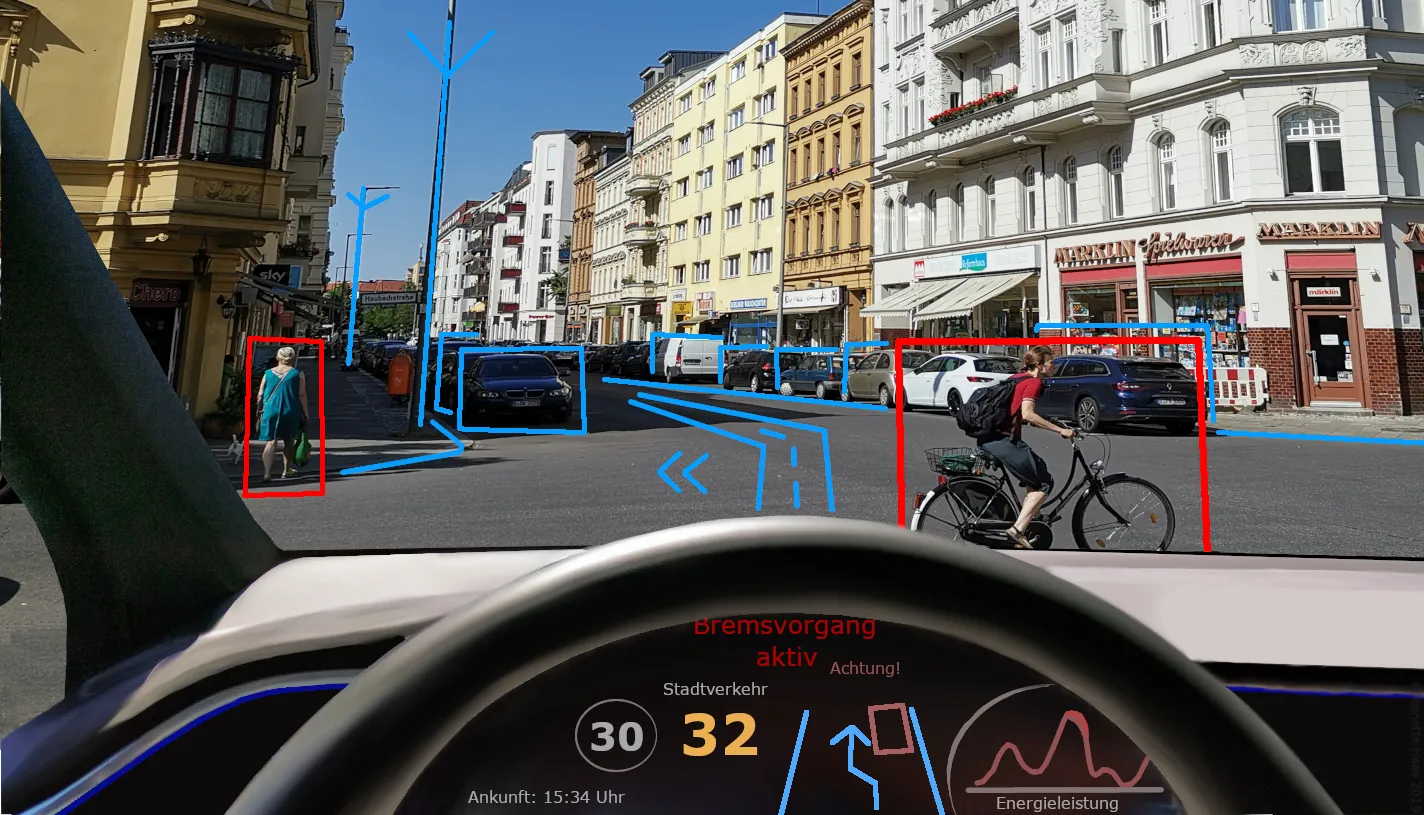BLOG

Date: 15 November 2023
Object Detection in video streaming has changed the norms of traditional streaming method. The days when viewers used to wait for an ad to end have gone now. Everything is hyper-personalized now and there is hardly any content that trouble viewers streaming their favorite program or show.
Do you think advertisers are at a loss? Not at all. Like viewers, advertisers also do not wait for their schedule time to stream the ad. One just needs to know how to integrate their ad in the running show and it’s a catch. Needless to say, Object Detection is in rescue. Wondering how? We have your back.
In this blog, we’ll dive into what object detection is, the technology behind it and its various use cases.
Object detection in video streaming refers to the process of identifying and tracking objects in real-time video streams. To perform object detection in real-time with analysis, computer vision, and machine learning algorithms is likable.
The analysis happens through deep learning modules like Convolutional neural networks (CNNs) and frameworks like TensorFlow and OpenCV. These tools allow algorithms to identify objects based on their visual features, such as shapes, colors, and textures.
Object detection algorithms typically follow two steps: region proposal and object classification. In the region proposal step, the algorithm identifies potential regions of interest within a video frame containing objects. These regions are then passed on to the object classification step, where the algorithm determines the specific object present in each region.
Advanced computer vision and machine learning are the primary technologies behind the Object Detection method. This technology is ever-evolving and forms the latest dimension of the algorithm.
The Object Detection algorithm integrates through the deep learning module CNN, which has proven highly effective in task performance.
An open-source machine learning framework, TensorFlow, is a popular choice for implementing object detection algorithms in streaming platforms. TensorFlow provides a wide range of pre-trained models and tools that simplify the development process.
Apart from that, OpenCV also offers a comprehensive set of computer vision algorithms and functions to perform object detection in video frames.
These tools, combined with powerful hardware, enable efficient and accurate object detection in video streaming applications.

The use cases for object detection in video streaming are vast and diverse, spanning various industries and domains. Let’s explore some of the most prominent applications:
Security and Surveillance
Object detection plays a crucial role in security and surveillance systems. It enables the automatic detection of anomalies or suspicious activities, allowing for proactive response and preventive measures. Additionally, it can track individuals of interest, providing valuable information for law enforcement agencies.
Entertainment and Advertising
In the entertainment industry, object detection can enhance user experiences by enabling personalized content recommendations. By analyzing viewers’ preferences in real time, video streaming platforms can suggest relevant content, improving user engagement.
Similarly, object detection can be used for targeted advertising, displaying advertisements tailored to the viewer’s interests.
Retail and E-commerce
Object detection has numerous applications in the retail sector. It can track and analyze customer behavior within a store, providing insights into foot traffic patterns, product popularity, and customer demographics.
Automotive and Transportation:
Object detection is a critical component of autonomous vehicles and advanced driver-assistance systems (ADAS). By detecting and tracking objects in real-time, these systems can make informed decisions, such as avoiding collisions or adjusting vehicle speed.
Object detection also plays a role in traffic management and monitoring, enabling efficient traffic flow and congestion detection.

The wide use of Object Detection algorithms talks about its significance in the video streaming industry. If we have to name a few, that could be:
Real-time Analysis
Object detection enables real-time analysis of video streams. It provides immediate insights and timely actions. This benefits the security and surveillance scenarios, where quick response times are crucial.
Automation and Efficiency
By automating the detection and tracking of objects, manual intervention can be minimized, leading to increased efficiency and reduced costs. Industries like retail and e-commerce, where large volumes of video data need to be processed, can benefit from this technology.
Enhanced User Experiences
Object detection enhances user experiences by personalizing content recommendations or targeted advertisements. It’s possible to deliver content that aligns with viewers’ preferences, resulting in a higher level of engagement and satisfaction.
Improved Safety and Security
In security and surveillance applications, object detection provides an extra layer of safety and security. It enables proactive monitoring, anomaly detection, and the tracking of individuals of interest, helping prevent potential threats.

Successful implementation of the Object Detection algorithm ensures the desired result. Engineers must follow some guides and rules for best implementation, and the best practices would be:
Quality Data and Diversity
The dataset should cover various object classes, perspectives, and environmental conditions. An accurately annotated dataset with ground-truth labels to facilitate practical model training is necessary.
Model Selection and Fine-tuning
One has to choose a suitable pre-trained model as a starting point and fine-tune it to the specific dataset. Experimenting with different architectures and hyperparameters to achieve the desired performance and efficiency also helps.
Hardware Optimization
Engineers should leverage hardware accelerators like GPUs or dedicated AI chips to accelerate the inference time of your object detection models. They should also consider the hardware requirements and scalability of the application to ensure efficient and cost-effective deployment.
Continuous Evaluation and Improvement
A regular evaluation of the performance of the object detection system is needed. Engineers should also iteratively improve it based on feedback and new data while keeping track of metrics like precision, recall, and accuracy to measure the system’s effectiveness.
Object detection in video streaming opens a world of possibilities for visual analysis and automation. With computer vision and machine learning algorithms, real-time object detection and tracking are possible, improving user experience and providing valuable insights. Although it has challenges and limitations, the benefits of object detection in video streaming make it a powerful tool for various industries and domains. With the development of technology, object detection systems will become even more advanced and efficient. Logituit, a leading streaming technology provider, has an influential position in the domain of Object Detection. It has worked on multiple projects while integrating various Object Detection algorithms.
Logix Enrich is the product that enables Logituit to integrate Object Detection algorithms on multiple platforms across devices. Be it logo detection, apparel detection, face recognition, or any other form of object detection, Logix Enrich offers robust AI-based solutions that can detect and identify objects in images and videos with high accuracy. It is a powerful tool for organizations looking to improve customer experience and automate processes.
Dhanya Bibin
Dhanya specializes in developing innovative solutions utilizing generative AI and deep learning. Her focus lies in the dynamic domain of video streaming and OTT, where she leverages cutting-edge technologies to enhance user experiences. With a keen interest in exploring the intersection of artificial intelligence and real-world applications, she’s dedicated to pushing the boundaries of what’s possible in this dynamic field.
Beyond her tech pursuits, she is an avid gardener, cultivating a cherished collection of rare orchid plants. Her passion for orchids seamlessly intertwines with her curiosity about AI’s real-world applications.
SHARE THIS ARTICLE
Stay up to date on latest trend in video tech
Related Posts
ALL RIGHTS RESERVED © LOGITUIT 2025 ( A registered trademark of EMTARANG TECHLABS PVT. LTD.)
To provide the best experiences, logituit.com use technologies like cookies to store and/or access device information. Consenting to these technologies will allow us to process data such as browsing behaviour or unique IDs on this site. Not consenting or withdrawing consent, may adversely affect certain features and functions.